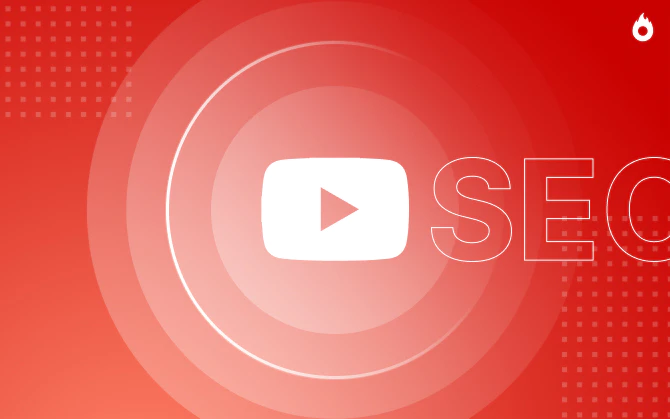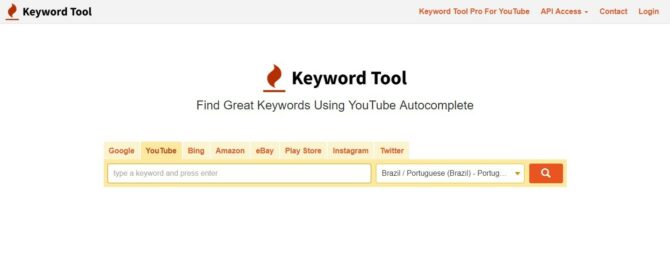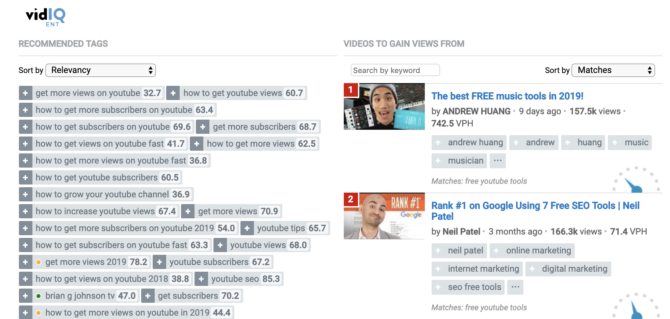
Learn How to Boost Your Views With YouTube Tags
Increase your YouTube views with these must-read tips!

What will we see in this post
YouTube is the biggest online video platform on the internet. It’s no wonder that this tool is already part of most digital marketing strategies. But there’s no point in posting content haphazardly. It’s important to optimize your videos so that they can be easily found by your audience, and one way to do this, is by using trending YouTube tags to increase views correctly.
Those who work with the content production know that algorithms control what is shown or not to each user, and with videos it’s no different!
The platform analyzes several details in each video to classify and rank the content, and among them are the tags.
If you wish to improve your channel’s SEO and gain views for your videos, keep reading this article. We have gathered everything you need to know in order to use YouTube tags in the best possible way. Check it out!
VIDEO: How to Create a YouTube Channel | Hotmart Tips

What are YouTube tags?
You are probably wondering what YouTube tags are. They are short words or terms that indicate the video’s subject, category or other details.
These tags allow the YouTube and Google algorithms to identify what the content is about, recommending the video to users who might be interested in it.
If you usually access YouTube, you have probably noticed the recommended video session that appears when you play any content.
Each suggestion is selected by the platform after its algorithm tracks and analyzes the tags, in order to identify whether or not the content is relevant to the video that the user was watching.
Why you should use tags in your videos
YouTube’s algorithm (still) can’t watch a video to understand its content. In order to do so, it needs to analyze a series of other complementary data, such as its description, title and of course, the tags.
With this, the platform is able to identify the video’s topic and its relevance, ranking the content for the related search terms or in the session of user recommended videos.
In other words, the better your YouTube tag strategy, the better your content’s position will be in user search results, attracting even more views, reaches and followers.
In fact, this is one of the main SEO for YouTube strategies, which you should make sure you apply.
How to choose and use the best YouTube tags
Much more serious than not using tags in your YouTube videos, is using random terms, without any relationship with your content. Besides not delivering the expected results, this practice can hinder your SEO strategy.
Using random terms that do not relate to your content, might confuse the platform’s algorithm and preventing the video from reaching good positions in searches and from being displayed to your target audience.
Therefore, it’s very important to know how to select the YouTube tags that indicate the video’s topic, and at the same time, have the potential of bringing results.
The first step is to rely on a well-defined persona. Thus, it becomes easier to find the keywords searched the most by users in your market niche.
Below, we’ve listed a few techniques for you to put into practice when it comes to choosing which tags to use.
1. Use the video’s main keyword as the first tag
When the time comes to analyzing SEO criteria, YouTube’s algorithm pays close attention to the first tags of a video. Especially the first one, which becomes much more important.
Therefore, make sure that your first tag is exactly the same as the main keyword that you wish to rank.
For example, if you want your content to be ranked for the “vegetarian omelet” keyword, you need to use this exact term as your first tag.
2. Mix comprehensive and specific tags
When talking about keywords, we can divide them into two types:
- Head tail, which are more comprehensive and generic terms, usually consisting of a single word. Because of this, they present a higher volume of searches and competition.
- Long tail, which are more specific terms consisting of more than one word. They present a lower volume of searches and less competition.
This same logic can be applied to YouTube tags.
Imagine a video with a recipe for a vegan carrot cake using the “vegan recipe” tag.
When users search for this term on YouTube, the results will be of videos with other recipes besides the carrot cake.
On the other hand, when you use the “recipe for a vegan carrot cake” tag, the results will be more specific and will display on videos with recipes for vegan carrot cakes, excluding other recipes.
We recommend that you mix both types of terms. But, paying special attention to more specific terms, since they present better results and there is less competition.
3. Don’t overdo it with the number of YouTube tags
Even if your video is very comprehensive, covering several topics, avoid the temptation of using dozens of tags.
By doing this, you confuse YouTube’s algorithm and might jeopardize your content’s ranking.
Keep in mind that these terms help the platform identify the content’s topic. And the more different tags you use, the harder it will be for the algorithm to understand what the video covers.
Overall, YouTube recommends the use of a maximum of 120 characters for the tags. This is equivalent to approximately 6 to 8 tags.
The best programs and tools for YouTube tags
In addition to the tips we’ve listed, there are also programs and tools that allow you to find the most used search terms, making it easier to create YouTube tags.
Check out the top 4 tools and how they work:
1. YouTube autocomplete

Our first suggestion isn’t a tool itself, but a feature integrated to YouTube: Autocomplete.
Have you noticed that as soon as you start typing something in YouTube’s search field, it provides a series of suggestions?
Believe me, they aren’t random sentences. On the contrary, they represent the terms most used by users in searches containing the keyword you just typed.
Although this feature has been developed to speed up users’ use of the platform, it provides valuable insights about what your audience is searching for.
In addition to becoming aware of the main questions asked by your audience with the autocomplete feature, you can also find variations of the keyword, terms that serve as great YouTube tags.
2. Keyword Tool

The Keyword Tool is one of the most used services to search keywords on the internet, providing hundreds of suggestions in a few seconds.
The tool allows you to search for the most popular terms on YouTube, filtering the results by country and languages supported by the platform. Thus, you can segment your search even further, achieving better results.
Besides, the Keyword Tool also allows you to filter your searches by questions, propositions and even hashtags that contain your keyword.
It’s possible to access these features for free. However, the service has a paid version that offers information, such as search volume, search trend over the last 12 months, CPC estimate and the competitiveness of each keyword.
3. VidIQ

VidIQ is another tool that has a specific feature to search for YouTube tags.
As with the Keyword Tool, just enter the desired term to have access to a list with suggestions of related terms.
VidIQ’s major unique feature is that the tool also offers relevant information about the term. You can find the volume of searches, the competitiveness of each tag, search trend in recent months, related terms and even the best-ranked videos for this keyword.
The tool is free to use, all you need to do is create an account. However, in order to have access to all of its features, you need to subscribe to one of the paid plans, which cost from USD 7.50/month.
4. YouTube Analytics
Finally, it’s only natural that we include the platform’s official tool, YouTube Analytics, on our list.
Through the reports provided by Analytics, you can find out exactly which terms are most used by users in order to find your video.
To do so, just access YouTube Studio, click on “Analytics” and then on “Reach”.
On the lower part of the screen, click on “Traffic Source”. You’ll receive a full report with all the keywords used by your audience. These terms are great for you to understand your users’ interests and problems, providing valuable insights about your next videos and strategies.
Knowing and correctly using SEO techniques is critical for your content to be relevant and be reached on the platform.
And in order to make your videos stand out among the thousands that are posted daily on the platform, make sure you use trending YouTube tags.
With our tips, you’ll be able to identify which terms are more relevant and use them in the best possible way.
And don’t stop there! Would you like to boost your channel’s performance even more and attract more views? Then check out our article with all the steps to create a killer thumbnail for your content.





